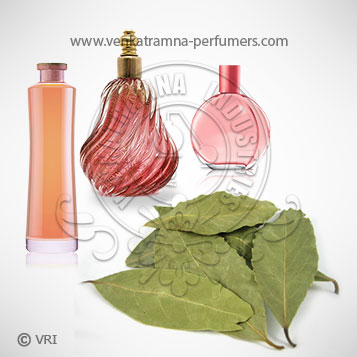
| Botanical Name | Cinnamomum verum |
| Common Name | Elaichi |
| Country of Origin | India |
| Solubility | Insoluble in water, soluble in alcohol and oils |
| Specific Gravity | 1.0407 @ 72°F |
| Optical Rotation | -2 |
| Refrective Index | 1.5307@ 72°F |
| PlantPart | Leaves |
| Bland With | Spice oils (particularly clove), & Lavender, Rosemary, Thyme. |
| CAS No | 8007-80-5 |
| Flash Point | 90 °F |
| Extraction Method | Steam Distilled |
The genus Cinnamomum (Laureaceae family) consists of 250 spices of trees and shrubs distributed in south-east Asia, China, and Australia. It is a small, evergreen tree, 10–15 m tall. The bark is widely employed as a spice, its leaves are ovate-oblong in shape, and 7–18 cm long. The flowers, arranged in panicles, have a greenish color and have a rather disagreeable odor. The fruit is a purple 1 cm berry containing a single seed. It is found in tropical rain forests, where it grows at various altitudes from highland slopes to lowland forests and occurs in both marshy places and on well-drained soils. However, in latitudes with seasonal climatic conditions, they become exceedingly rare. There are two main varieties of cinnamon namely the Ceylon or true cinnamon (Cinnamon zeylanicum) and cassia (Cinnamom aromaticum). C. zeylanicum is native to Sri Lanka and tropical Asia and exotic to several African countries, such as Comoros, Ghana, Madagascar, Mauritius, Nigeria, Seychelles, Sierra Leone, Tanzania, and Uganda.
The medicinal use of Cinnamon Bark was first recorded in Chinese formulations as early as 2700 B.C. The herb has been used as a healing aid for stomach upset and gas, diarrhea, rheumatism, kidney ailments, and abdominal pain. The Egyptians used it as a foot massage, as well as a remedy for excessive bile. It was used as an ingredient of mulled wines, love potions and a sedative during birthing. Cinnamon, the eternal tree of tropical medicine, belongs to the Lauraceae family. Cinnamon is one of the most important spices used daily by people all over the world. Cinnamon primarily contains vital oils and other derivatives, such as cinnamaldehyde, cinnamic acid, and cinnamate. In addition to being an antioxidant, anti-inflammatory, antidiabetic, antimicrobial, anticancer, lipid-lowering, and cardiovascular-disease-lowering compound, cinnamon has also been reported to have activities against neurological disorders, such as Parkinson’s and Alzheimer’s diseases. This review illustrates the pharmacological prospective of cinnamon and its use in daily life.
Color : Yellowish to brownish liquid @22C with Woody Spicy Cinnamon odor,
Aroma : Cinnamon leaf oil has a warm, spicy fragrance and resembles to clove oil.
Eugenol, cinnamaldehyde, eugenol acetate, benzyl benzoate, linalol, Aldehyde Content (as Cinnamon aldehyde )
Cinnamon Leaf oil works as a stimulant, antiseptic (as with cinnamon bark), and as antibiotic. Further, it also has astringent, carminative, emmenagogue and natural insecticide and antispasmodic properties. Essential oils of cinnamon and leaf are widely used in food flavours, cosmetics and pharmaceuticals. Cinnamon is mainly used in the aroma and essence industries due to its fragrance, which can be incorporated into different varieties of foodstuffs, perfumes, and medicinal products. The Oil is rich in monoterpenoids and phenyl propanoids. (E)-Cinnamaldehyde is the main component of cinnamon bark oil and eugenol the main component of the leaf oil. Benzyl benzoate chemotypes of cinnamon bark and leaf oils and linalool chemotype of cinnamon leaf oil were also reported. Essential oils of other parts such as fruit, fruit stalk, flower, bud, leaf petiole of cinnamon have also reported having medicinal and pharmacological benefits.